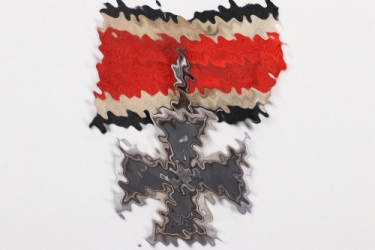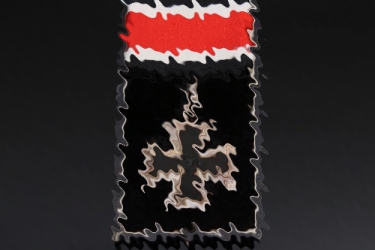Ritterkreuz des Eisernen Kreuzes
Militaria Preisdatenbank
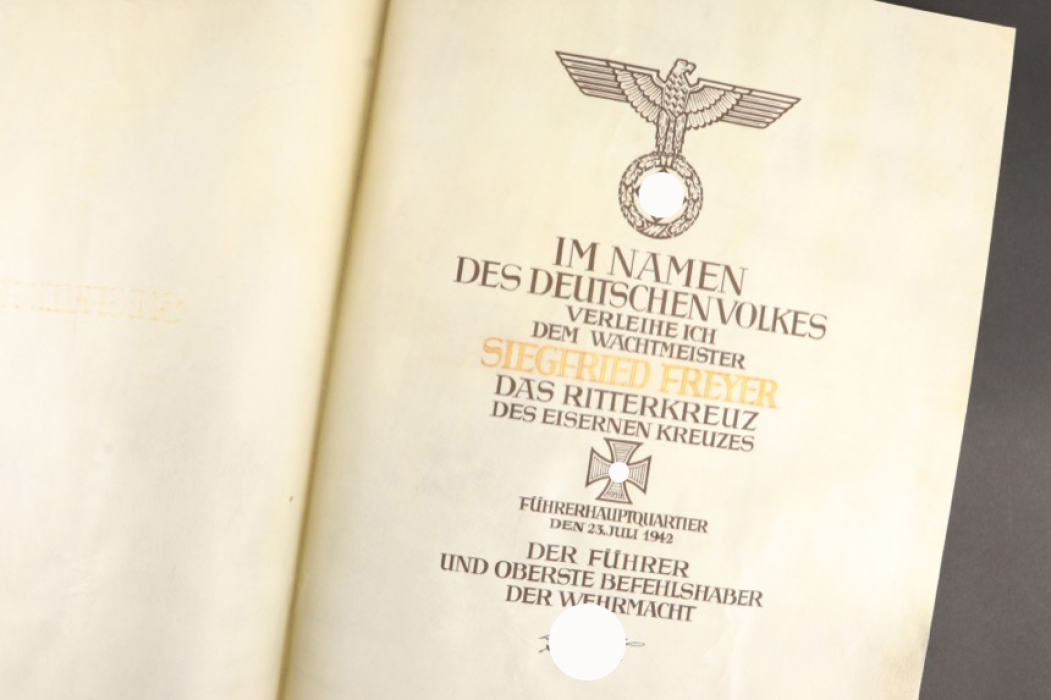
Wachtmeister Siegfried Freyer - Urkunde zum Ritterkreuz des Eisernen Kreuzes
MILITARIA PREISDATENBANK
Wie kann ich Verkaufspreise sehen?
Melden Sie sich noch heute unter www.ratisbons.com/de/militaria-preisdatenbank für unsere MILITARIA PREISDATENBANK an! Bei Abschluss eines jährlichen Abonnements für nur 75€ sparen Sie 25%.
Ihr Zugang zu allen Verkaufspreisen, Bildern und Beschreibungen wird umgehend nach Abschluss Ihres Abonnements freigeschaltet.
Wir kaufen Einzelstücke und ganze Sammlungen und beraten Sie auch gerne telefonisch: 08541 9053699
-
Bezahlung
-
WIE KANN ICH FÜR MEINE BESTELLUNG BEZAHLEN?
AUKTIONAlle erfolgreichen Gebote werden automatisch zu einer einzigen Bestellung zusammengefasst. Für diese können Sie uns nach Auktionsende in Ihrem persönlichen Kundenkonto Ihre bevorzugte Bezahl- und Versandart oder eine alternative Lieferadresse mitteilen.
Wenn wir diese freiwilligen Angaben nicht von Ihnen erhalten melden wir uns automatisch im Laufe des Montags nach Auktionsende mit einer Zahlungsanweisung per Email. Basierend auf Erfahrungswerten schlagen wir Ihnen die bequemste Bezahlmehtode und die günstigste Versandart vor. Sie möchten Ihre Bezahl- und Versandart ändern oder eine alternative Lieferadresse angeben? Kein Problem! Besuchen Sie Kundenkonto/BESTELLUNGEN oder kontaktieren Sie uns per Email.
BESTELLUNGEN IM ONLINESHOPWählen Sie während der Bestellung Ihre bevorzugte Bezahl- und Versandart und schicken Sie diese ab. Sie erhalten Ihre Zahlungsanweisung spätestens am darauffolgenden Tag per Email. Die Zahlungsfrist beträgt sieben Tage. Sie planen eine Bestellung per Ratenzahlung zu begleichen? Bitte sprechen Sie uns gerne vor Ihrer Bestellung darauf an.
Für mehr Informationen zu Bezahlung und Versand, besuchen Sie unsere Häufigen Fragen.
WIR AKZEPTIEREN FOLGENDE BEZAHLARTEN
-
-
Versand
-
IHRE BESTELLUNG IN DEN BESTEN HÄNDEN
VERPACKUNG & SENDUNGSVERFOLGUNGNach Zahlungseingang versenden wir Ihre Bestellung für gewöhnlich am darauffolgenden Werktag. Wir bestätigen den Eingang Ihrer Zahlung per Email und informieren Sie zur Versandvorbereitung. Nach Abholung der Sendung durch unsere Versanddienstleister teilen wir Ihnen die Sendungsnummer per Email mit. Den Status Ihrer Sendung können Sie auch jederzeit unter Kundenkonto/BESTELLUNGEN einsehen. Ihre Rechnung geht Ihnen automatisch am Tag des Versands zu.
VERSAND ZU EINER ALTERNATIVEN ADRESSEBevorzugen Sie für eine Bestellung einen Versand zu Ihrer Arbeitsstelle? Sie sind im Urlaub und wünschen den Versand zu einer Packstation oder einem Freund? Kein Problem! Diese Änderungen können Sie jederzeit unter Kundenkonto/BESTELLUNGEN vornehmen. Alternativ können Sie natürlich jederzeit auch per Email informieren.
UNSERE PARTNER FÜR DEN VERSAND
-
-
Garantie
-
 GARANTIE!
GARANTIE!Alle angebotenen Artikel werden von unseren Experten akribisch auf deren Echtheit geprüft und detailiert beschrieben. Wir bieten ausschließen zeitgenössiche Originale an. Etwa 15% aller Kundeneinlieferungen ensprechen unseren Anforderungen nicht und werden retourniert.
Gekauft wie gesehen? Nicht bei uns. Im Gegensatz zu traditionellen Auktionshäusern bieten wir volles Rückgaberecht of Originalität an. Sollten Sie mit Ihrer Bestellung nicht zufrieden sein, können Sie die Bestellung innerhalb 14 Tagen widerrufen. Bitte kontaktieren Sie uns vor dem Rückversand. Für mehr Einzelheiten besuchen Sie bitte unsere häufigen Fragen.
In eigener Sache: Bieten Sie nur auf Lose, die Sie auch erwerben möchten. Bitte vermeiden Sie Gebote nach Auktionende zu stornieren. Sollten Sie ein fehlerhaftes Gebot abgegeben haben, informieren Sie uns bitte umgehend. Wir löschen Ihre Gebote gerne bis 24 Stunden vor Ende der Auktion.
-
Land Deutsches Reich 1918 - 1945
Maße 43.8 x 35.5 cm
Gewicht
 US Los US3-0098
US Los US3-0098EAN 3000000016121
 US Los US3-0098
US Los US3-0098Epoche 1918 — 1945
Land Deutsches Reich 1918 - 1945
Land Deutsches Reich 1918 - 1945
 US Los US3-0098
US Los US3-0098Deutsches Reich 1918 - 1945
Ritterkreuz des Eisernen Kreuzes
Beschreibung
Wachtmeister Siegfried Freyer (February 11, 1917 – May 10, 2014)
Freyer, who came from the cavalry to the armored troops, belonged to the 24th Panzer Regiment, the only tank regiment of the 24th Panzer Division under Lieutenant General Bruno Ritter von Hauenschild , which was set up on December 3, 1941 at the Stablack military training area in Military District I. On July 7, 1941, on the Eastern Front, Freyer, commander of a Panzer IV with a long-barreled gun (F2 version) and the number "434", had his first major test. The division's Panzergrenadiers had orders to clear Voronezh of the enemy. Freyer received the order to protect the infantry from enemy tanks. In the garden next to a house and behind a high wooden fence he had his tank put into position in the morning, his crew consisted of: Driver Unteroffizier Wilhelm Schmidt (Born June 13, 1915 in Riedermören; missing in Stalingrad since January 1943), Gunner Unteroffizier Alfons Fischer (Born December 24, 1915 in Reichenberg), Loder Private Arnold Groll (Born June 13, 1921 in Oberhausen) and Funker Gefreiter Heinrich Müller (Born May 24, 1921 in Kätalingen, Anhalt; missing in Stalingrad since January 1943) After the tank was well camouflaged and the entrance and exit roads were clearly visible, the men observed the grenadiers' house-to-house combat, but were also ready with hand weapons to defend the tank from Russians or partisan that could approach on foot. It was a long, hot day filled with dust and mosquitoes. Then it happened: At 8 p.m., a T-34 emerged from a side street to the left of Freyer's position. The enemy tank tried to escape at high speed, followed by more than 30 other tanks from a Russian tank brigade. Freyer acted quickly and took steps to prevent the outbreak, albeit alone. Three shots and three hits, the first three T-34s were on fire. The gunner then reported that a shell casing had blocked the barrel. As Freyer later reported, the gun that had been delivered shortly before had still „Zahnungsprobleme”. Freyer and driver Schmidt jumped off, assembled the equipment and cleaned the gun barrel. The Russians noticed the pause and started firing wildly. The Panzer IV received no hits, however, but loader Groll was severely wounded in the head by shrapnel. He was pulled out of the tank and Funker Müller now became the loader. The fence in front of the tank was shredded, but Freyer's tank survived and became even more deadly. Eight other enemy tanks were destroyed in about 20 minutes, five T-34s and three T-60s. The remaining tanks fled in all directions, now being pursued by the German regiment, which had become aware of the battle because of the burning tanks. More tanks from Freyer's company appeared and escorted the heroes, who were now without ammunition, to Wilfried von Winterfeld and the regimental commander, Colonel Gustav-Adolf Riebel. Most of the Russian tanks were later taken by the regiment and destroyed, and Voronezh was in German hands that night. For the act of bravery, Freyer was awarded the Knight's Cross and all other crew members were awarded the Iron Cross, 1st class. The Knight's Cross award ceremony took place at the beginning of August 1942 during a break in the fighting at the regiment's command post. Only Arnold Groll, who was still in the hospital, could not take part in the ceremony. (From metapedia)
Knights Cross of the Iron Cross formal award document issued to Wachtmeister Siegfried Freyer on parchment with an integral blank front leaf, Führerhauptquartier, July 23, 1942. The ornately lettered document is executed in India ink and gold with a hand-inked signature of Adolf Hitler at the bottom. The parchment is just the slightest bit wavy, as is very common in such documents, but otherwise fine condition. Award documents for the Knight’s Cross are rare, even though Hitler granted over 7,000 of them. A severe backlog soon developed and, in the end, very few recipients of the award ever received their large formal award documents.
The document is part of a veteran bring-back that we proudly offer here for the very first time. The GI opted to bring 9 single formal documents in one red presentation leather folder (Mappe) which is offered in this auction (USA LOT US3-0100).
Zustand
1-
Verkäufer
History Trader Inc., 521 Thorn Street #165, Sewickly, PA 15143-0165, USA
NAME
Ritterkreuz des Eisernen Kreuzes
DATUM DER STIFTUNG
1. September 1939 als dritte und neue Stufe des wiederhergestellten Ordens vom Eisernen Kreuz
AUSZEICHNUNGSKRITERIEN
Das Ritterkreuz des Eisernen Kreuzes wurde für besondere Tapferkeit im Angesicht des Feindes und für heraus- ragende Verdienste um die Truppenführung verliehen. Die Verleihung des Ritterkreuzes erforderte die vorherige Vergabe der beiden niedrigeren Stufen. Das Ritterkreuz wurde allein vom Führer auf Vorschlag der Einheit des Soldaten verliehen und vom Heerespersonalamt ausgestellt. Die Ritterkreuze wurden in der Ordenskanzlei in Berlin aufbewahrt, um nach Genehmigung dem Beliehenen zugeschickt zu werden. Vor Ende April 1945 wurden auf keiner Ebene der Wehrmacht Ritterkreuze gelagert.
HERSTELLER
Das Ritterkreuz des Eisernen Kreuzes wurde von sieben Herstellern gefertigt, Varianten innerhalb den einzel- nen Firmen nicht berücksichtigt. Die Ritterkreuze findet man entweder ungestempelt (frühe Juncker und 3/4 Ring Kreuz), mit Silbergehaltsstempel, mit einer LDO-Nummer (L/12 und L/52) und später mit der Präsidialkanzlei- Nummer des Herstellers (2, 20, 65 und 4). Privatverkauf war ab Oktober 1941 verboten.
VERLEIHUNGSZAHLEN
Genaue Zahlen sind nicht bekannt, aber die Schätzungen liegen bei 7.200 und ein paar hundert mehr auf Laager bei der Präsidialkaanzlei.
AUSZEICHNUNGSUNTERLAGEN
Der Beliehene erhielt eine vorläufige Urkunde im Format A5, ausgestellt im Namen des Führers von den zustän- digen Personalämtern der drei Wehrmachtsteile. Die formellen Urkunden (Große Mappe) wurden später aus- gestellt und sind aufgrund des großen Herstellungsrückstandes nur mit Datum Ende 1942/Anfang 1943 zu finden.
TRAGEMETHODE
Das Ritterkreuz wurde mit dem rot/weiß/schwarzen Band als Halsorden getragen. Das Ritterkrreuz wurde im schwarzem Etui und beiliegendem Band verliehen.


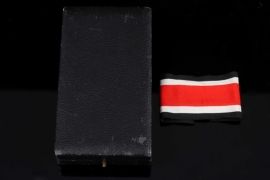
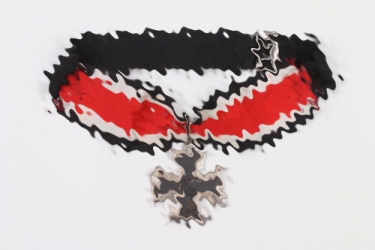

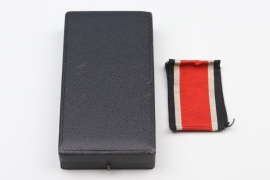
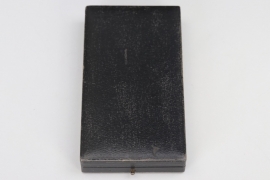
.jpg)
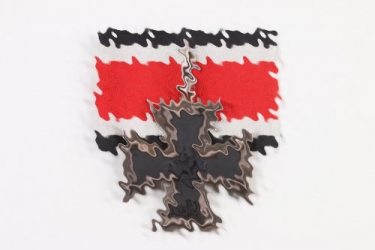




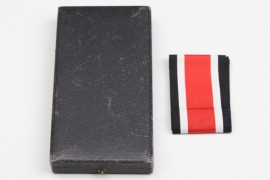

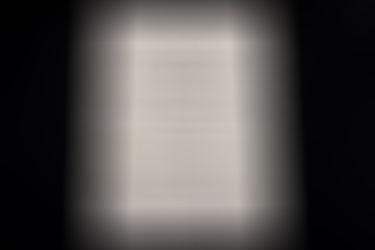


.jpg)


.jpg)


